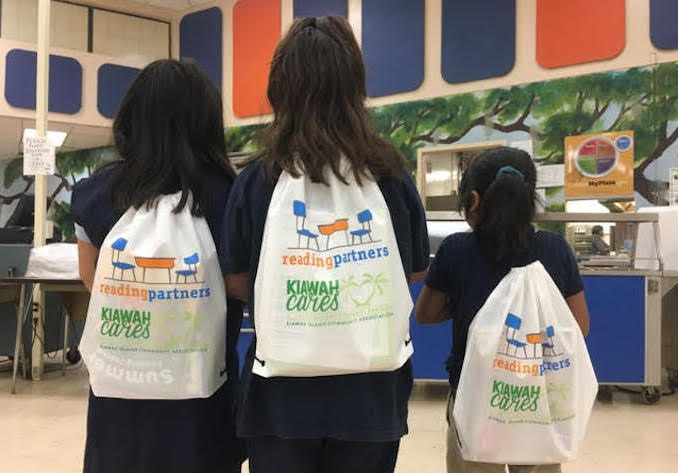December 12, 2022
From Peace Corps to AmeriCorps: What service can do for you
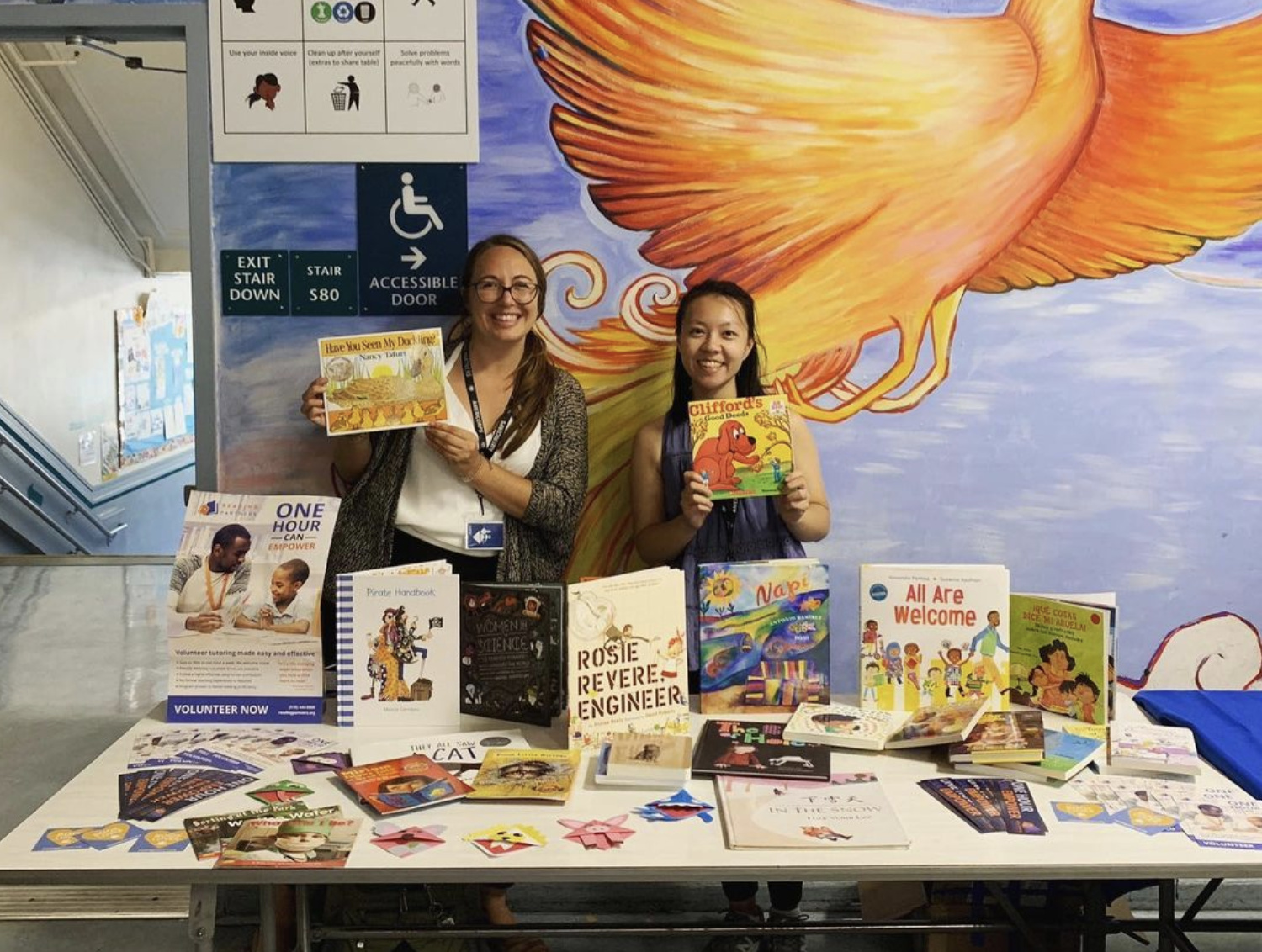
It’s been 3 years since I woke up to the sound of free-range roosters starting my day. I would hop on my bike to cross a 2-lane highway, often stopping by a food stand for a breakfast of fried dough and rice porridge, before arriving at a Pratom through Matayom (roughly K-9) school painted in bright pastels and surrounded by lush green. I would make my way to the squat toilet bathroom to change into a skirt and Crocs, in time to line up on a grass field filled with students standing in reasonably straight lines, and together we would listen to announcements, recite a Buddhist prayer and later enter our small library space to start classes for the day. This was my routine for 2 years as a Peace Corps volunteer in Thailand.
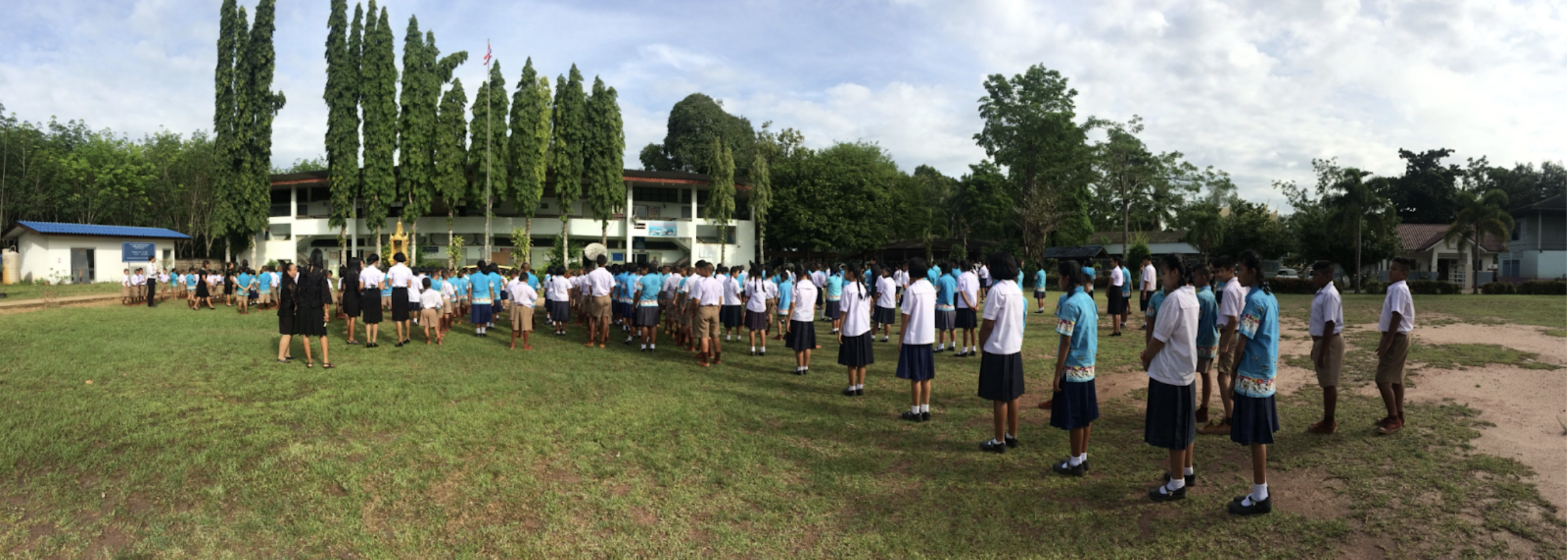
Lauren’s school in Thailand where she completed her Peace Corps service
Before joining any Corps, I thought that the idea of national service only related to the military. I never envisioned myself joining the armed forces; however, the idea of being of service to a larger global community of humans had an idealistic and cosmopolitan glow that did appeal to me. Little did I know at the time that my service abroad through the Peace Corps would bring me closer to service at home through AmeriCorps. This transition was a simple, life-changing choice and one I would encourage more people to consider.
My motivation for serving
My motivation to become an Americorps member was directly influenced by my service as a Peace Corps volunteer in Thailand. The appeal of the Peace Corps was obvious to me; the requirements of living internationally, learning a new language, and riding my bike to a rural school convinced me to apply. It was returning home and returning to service that surprised me. Having left my home country initially to tackle challenges like literacy in Thai communities, I realized that these same hefty challenges also existed in my native state of California.
I do the same service here in the Bay Area as I did in the province of Surat Thani: supporting communities by providing English literacy support to elementary-aged students. Often, when students don’t have opportunities to grow their literacy skills, they lack opportunities to grow beyond their small communities to pursue their passions.
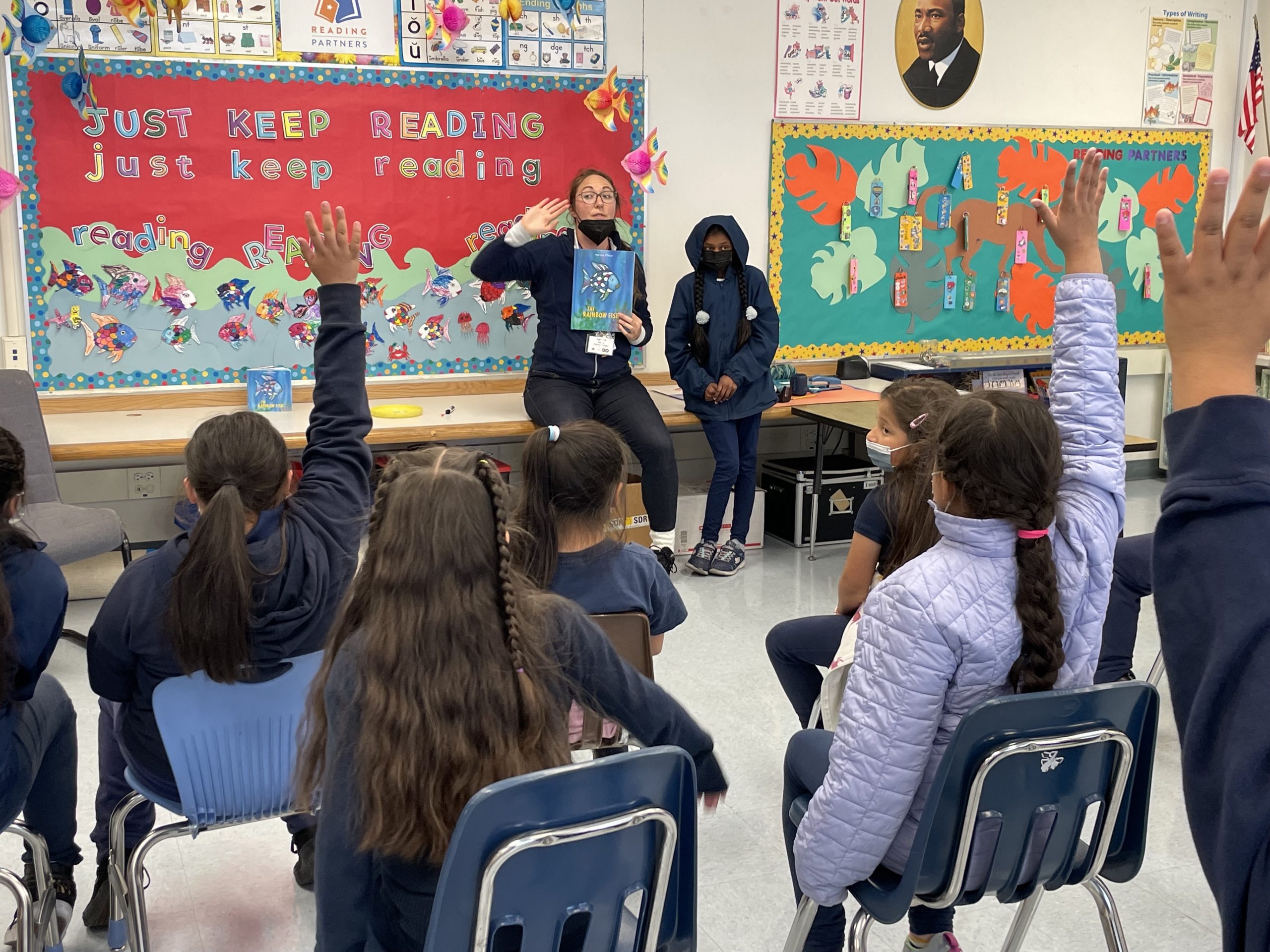
Lauren as an AmeriCorps member in a reading center in the San Fransisco Bay Area
Similarities and differences
Peace Corps and Americorps service have many similarities. Both have cohorts of like-minded people from different backgrounds around the United States that receive training together. The cohort builds bonds of friendship and a shared mission as they live off limited budgets, continuously learn new skills, problem-solve throughout the year, and work with under-resourced communities to create a sustainable impact. I remember community mapping around the Mission district of San Francisco in the same way I did when I arrived at my small village in Tha Chang.
Most of the differences between these Corps are in the numbers: Peace Corps requires 27 months of service while AmeriCorps service with Reading Partners requires terms ranging from six to eleven months (often with options to extend). The cost of living expenses in California are much higher, so as I struggled to live in San Francisco with a stipend of about $2,000 a month, I was able to live quite comfortably in Thailand with a stipend of about $300 a month.
Both ways of serving come with benefits for higher education upon completion of service–Peace Corps has a Coverdell Fellowship program that partners with universities across the nation so that returned Peace Corps volunteers (RPCVs) can get discounts on graduate degree programs; RPCVs also are afforded 12 months of noncompetitive eligibility (NCE) hiring status for jobs within the federal government. AmeriCorps alumni are allotted an education award that can be used towards loans, school supplies, university fees, or even programs abroad like Amerispan once they have completed their required hours for their term of service.
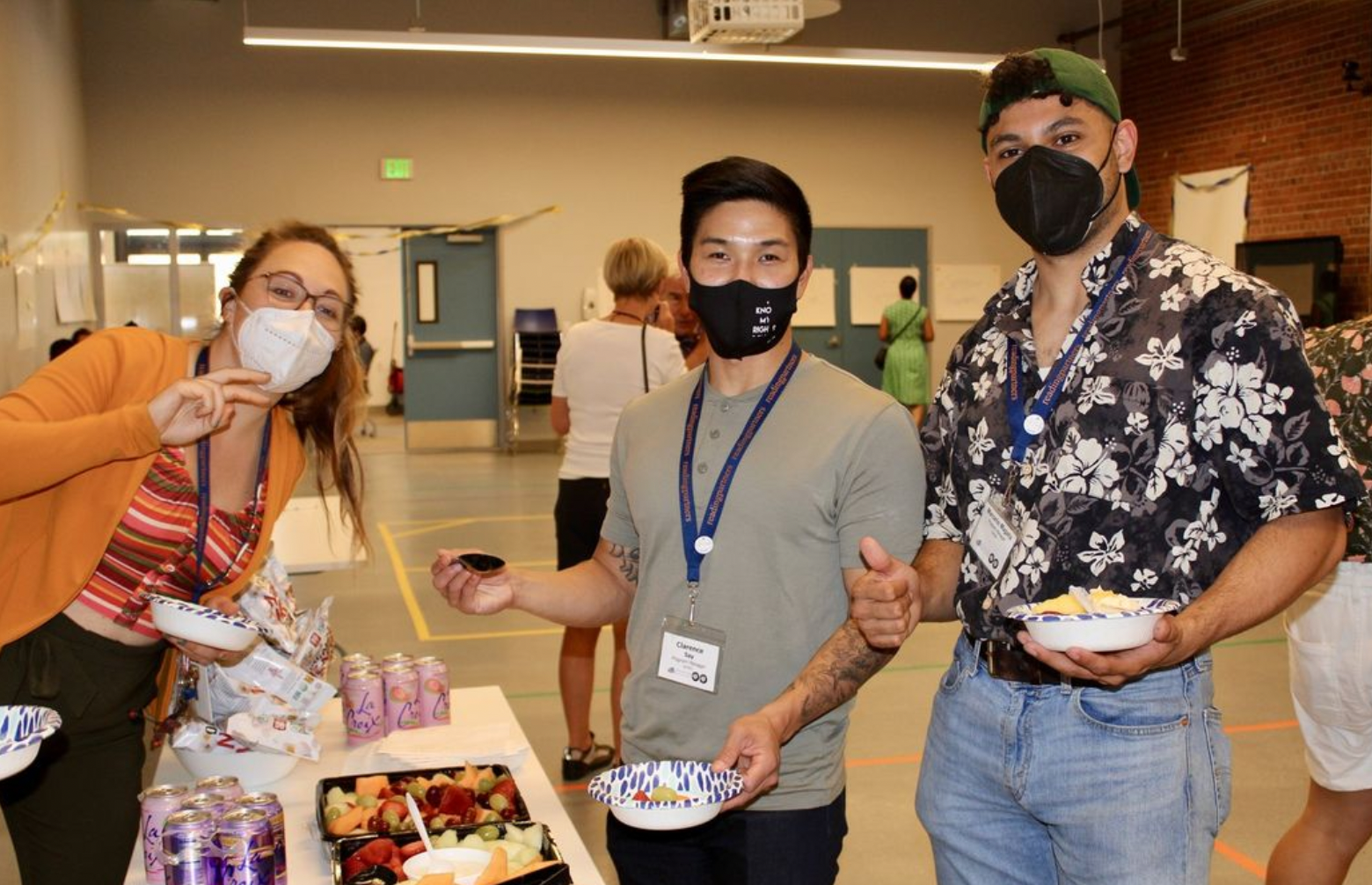
Lauren and a couple of other members of the Reading Partners SF Bay Area team during an AmeriCorps member orientation
The Reading Partners team and what service means
The transition from Peace Corps to Americorps service isn’t uncommon, especially at Reading Partners. In fact, two members of the San Francisco Bay Area team also served abroad before joining Reading Partners: community engagement manager Derek Methu and program manager Clarence Say.
Derek told me that when he returned from his service in Guyana he wanted to figure out how he could support his local community. He spent a year thinking about doing a Ph.D. program but ultimately decided he wanted more experience locally with grassroots organizations and community engagement teams.
“AmeriCorps is the perfect organization because it’s tied to such movements as the California Climate Action Corps, which l served for five months,” Derek shared. “It changed my perspective on how engaging with nature is as important as being able to read.”
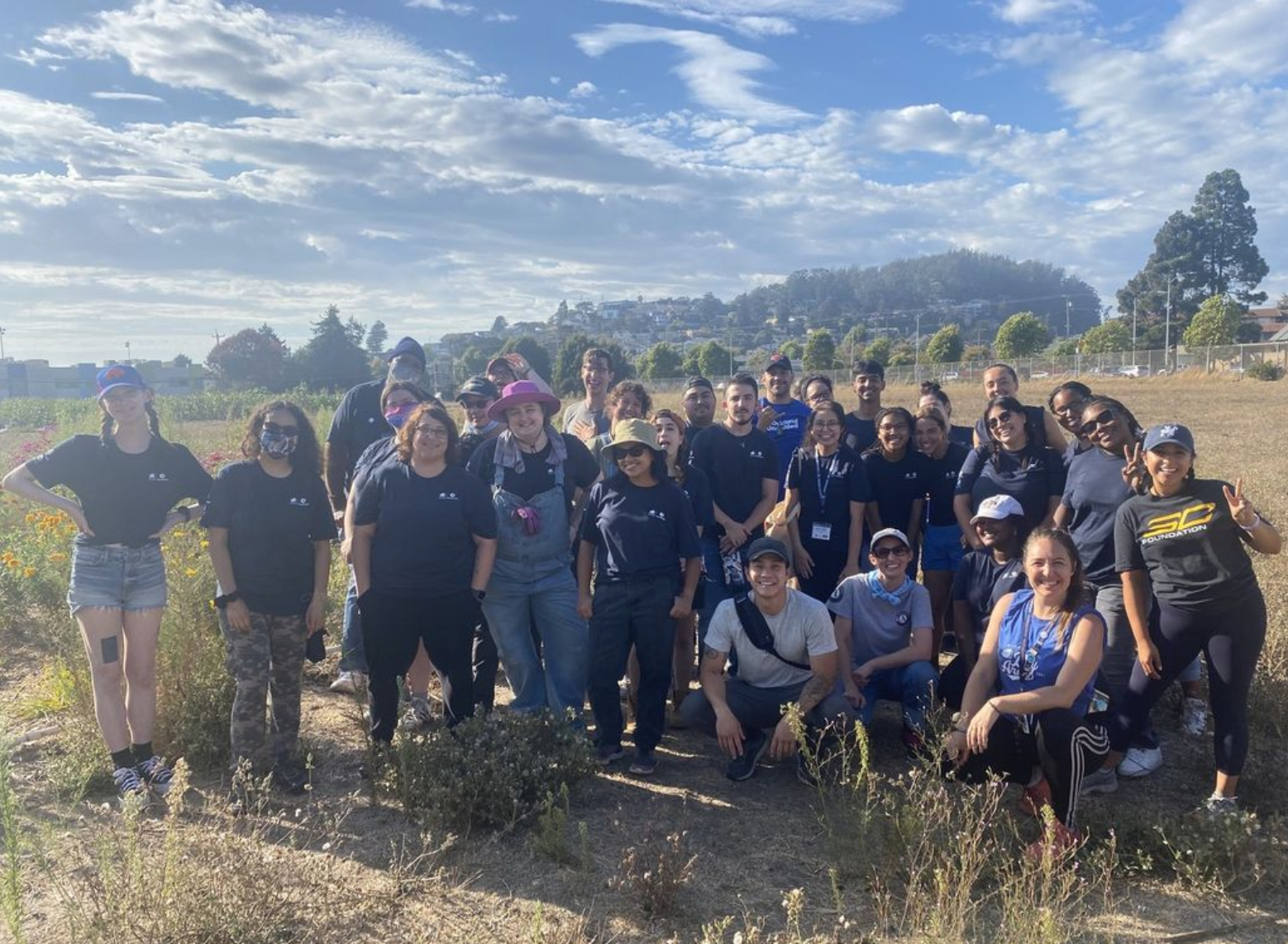
The Reading Partners SF Bay Area team completing a day of service at a local farm
When Clarence completed his service in Thailand he immediately took a job teaching English in China before COVID forced him to return stateside. He found an apartment with his sister near Golden Gate Park and served a year as a remote distance tutoring coordinator with Reading Partners before joining the program team full-time.
For Clarence, “service means doing what you can, where you are, with what you have. It’s about taking the time to get to know yourself deeply and finding ways to be present to yourself, to feed your own mind, body, and spirit, and awaken your passions, find what it is that excites you and makes you wake up in the morning, so that you can better be present to others.”
Clarence continues to model being authentic for his portfolio team as well as the Bay Area Management team. He believes it’s important to model what it means to do your best every single day “because you know that what you do matters. You know that you matter. You know that the people around you matter. You know that the community in which you live and choose to serve matters.”
Clarence concluded that for him, “service is about all the little things that make up your life and the way in which you decide to fit them together so that when you take a step back, you see more than just yourself in the bigger picture.” Derek added that for him, “service means taking an ‘L’ and enjoying the process because I made a difference in the long run. I joined the Peace Corps because I wanted to meet people who had lived a life in places I had only read about and wanted to experience. It was the hardest part of my life I’ve experienced, and I would do it all over again.”
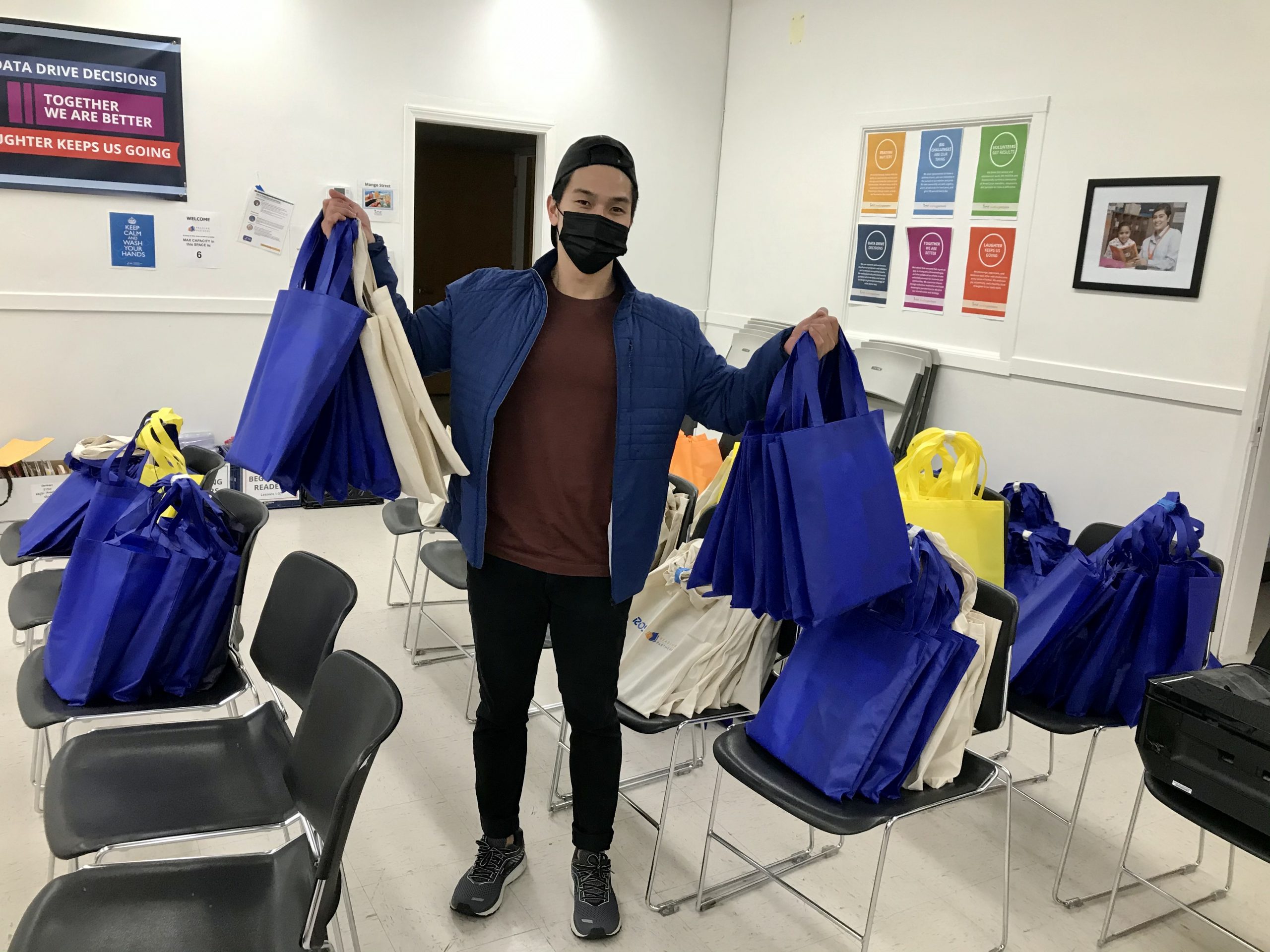
Clarence Say pictured with bags filled with books for students
After service
There is a large alumni network of both Corps in the Bay Area – Returned Peace Volunteers of North California plan monthly events from hiking to happy hours. Americorps alumni often come back to support where they served, including tutoring with Reading Partners or even being a part of professional development panels that share about their lives and careers after Americorps service.
For me, service has changed the way I live my life. I haven’t owned a car in 5 years. I bicycle or take public transportation as a way to save money, help the environment, and be a part of my community. I still use the same reusable coffee mug I bought in Bangkok when I buy a coffee in Oakland. I eat rice weekly and refill my containers instead of buying packaged foods that create waste. I bought a pair of Crocs to survive the tropical weather and will continue to wear Crocs through all California weathers and until my dying day.
Moreover, I am now more aware of and passionate about finding and sharing diverse texts from the world of children’s literature that reflect the unique experiences of the diverse students I work with. Whether I am reading Party Croc: A Folktale from Zimbabwe written by Margaret Read MacDonald or trekking across the street to a school in my Croc shoes, I am grateful for the diversity of people, students and peers alike, I have met throughout my service years.
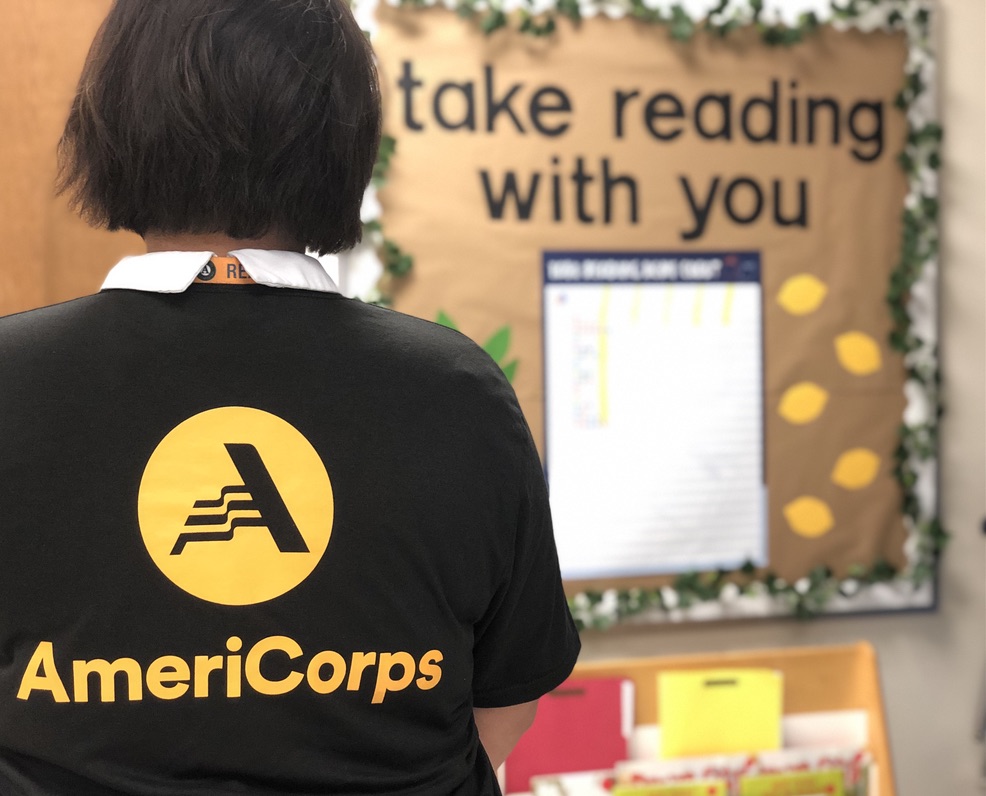
Serve with Reading Partners
We hope more service-minded people across the nation will consider serving with Reading Partners. As we serve elementary schools across the country in 12 different regions, one does not need to leave the United States in order to experience a service year in a new, culturally diverse environment. If you’re interested in serving with AmeriCorps at Reading Partners, learn more or apply here.

